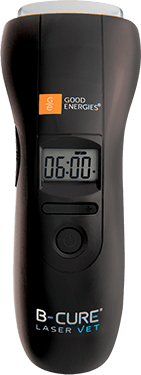Common Misconceptions About Treating Dog Ear Infections: Debunking the Myths
As a dog owner, you want to ensure your furry friend is always healthy and happy. One of the most common health issues in dogs is ear infections. Unfortunately, there are many misconceptions about treating dog ear infections that can lead to ineffective or even harmful treatments. In this article, we will debunk some of the most common myths about treating dog ear infections, and provide evidence-based advice on how to treat and prevent chronic ear infections in dogs.
Myth #1: Dog Ear Infections Will Go Away on Their Own
One of the most dangerous myths about dog ear infections is that they will go away on their own. While some mild ear infections may resolve on their own, chronic ear infections require medical intervention. If left untreated, chronic ear infections can cause pain, discomfort, hearing loss, and even permanent damage to the ear canal. Moreover, chronic ear infections can be a symptom of an underlying health condition, such as allergies or a weakened immune system.
If your dog shows any symptoms of an ear infection, such as shaking its head, scratching its ears, or a foul odour coming from the ears, it is crucial to seek veterinary care. A veterinarian can examine the ear canal and prescribe appropriate treatment, such as antibiotics or antifungal medications, to eliminate the infection.
Myth #2: Cleaning Dog Ears with Q-Tips is Safe and Effective
Another common myth about treating dog ear infections is that cleaning the ears with Q-tips or cotton swabs is a safe and effective method. However, this practice can be dangerous and cause more harm than good. Inserting anything into the ear canal can push debris and wax further into the ear, leading to irritation, inflammation, and infection. Moreover, using Q-tips can damage the delicate ear canal lining, causing pain and bleeding.
If you want to clean your dog’s ears, it is best to use a veterinarian-approved ear-cleaning solution and a soft cotton ball. Gently wipe the outer ear and ear flap with the cotton ball, and avoid inserting anything into the ear canal.
Myth #3: Antibiotics are Always Necessary for Treating Dog Ear Infections
Another common myth about treating dog ear infections is that antibiotics are always necessary. While antibiotics can effectively treat bacterial ear infections, they are not always the best choice. In fact, using antibiotics unnecessarily can lead to antibiotic resistance, a serious public health issue that affects both humans and animals.
If your dog has a mild ear infection caused by yeast or fungi, antibiotics may not be effective. In these cases, antifungal medications may be a better choice. Moreover, some ear infections may be caused by underlying health conditions, such as allergies or immune system disorders. In these cases, treating the underlying condition may be necessary to eliminate the ear infection.
Myth #4: Natural Remedies are Always Safe and Effective for Treating Dog Ear Infections
While natural remedies can be safe and effective for treating some dog ear infections, not all natural remedies are safe or effective. In fact, some natural remedies can be harmful and cause more harm than good. For example, some essential oils, such as tea tree oil, can be toxic to dogs if ingested or applied directly to the skin. Moreover, some natural remedies, such as vinegar or hydrogen peroxide, can be too acidic and irritate the ear canal, leading to further inflammation and infection.
If you want to use natural remedies to treat your dog’s ear infection, it is best to consult with a veterinarian first. A veterinarian can recommend safe and effective natural remedies, such as coconut oil or aloe vera, and provide guidance on proper dosing and application.
How Bcure comes to your help?
BCure laser therapy is a non-invasive treatment that uses low-level laser light to stimulate cellular repair and reduce inflammation. The therapy has been shown to be effective in treating some types of ear infections in dogs.
The laser light penetrates the skin and reaches the affected area of the ear, where it stimulates the cells to produce more ATP (adenosine triphosphate), which is the main source of energy for cellular processes. This increased ATP production promotes cellular repair and regeneration, which can help to reduce inflammation and heal damaged tissues.
In addition, BCure laser therapy has been shown to have an analgesic effect, which can help to reduce pain associated with ear infections. This can be especially important for dogs with chronic ear infections who may be experiencing significant discomfort.
Furthermore, BCure laser therapy has been found to be safe and non-invasive. Unlike some other treatments, such as ear flushing or surgery, BCure laser therapy does not require anaesthesia or sedation, which can be stressful for dogs and can have potential risks.
Bottom Line
In conclusion, there are many misconceptions about treating dog ear infections that can lead to ineffective or harmful treatments. It is important to seek veterinary care if your dog shows any symptoms of an ear infection, such as shaking its head or scratching its ears. Moreover, it is important to avoid using Q-tips or cotton swabs to clean your dog’s ears, as this can cause more harm than good.
While antibiotics can effectively treat some types of ear infections, they are not always necessary or appropriate. Natural remedies can be safe and effective for treating some ear infections, but it is important to consult with a veterinarian first. Finally, BCure laser therapy can effectively treat some types of ear infections and should be used in conjunction with veterinary care.
By debunking these myths and providing evidence-based advice on how to treat and prevent chronic ear infections in dogs, we can help ensure that our furry friends are healthy and happy for years to come.




